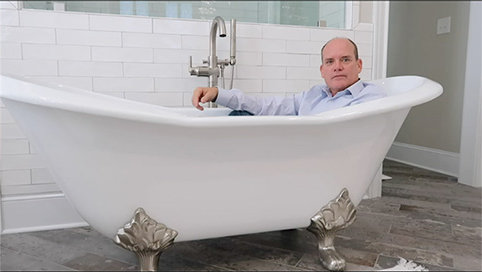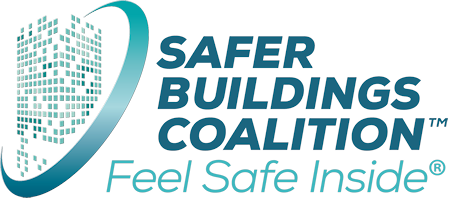From the Chief’s Corner: Indoor Plumbing and the ERCES

Posted on October 22, 2020
I’m willing to bet that 100 percent of the commercial buildings that have an In-Building Emergency Responder Communications Enhancement System (ERCES) installed also have some type of indoor plumbing. That got me thinking: When did commercial buildings in the US begin to have indoor plumbing?
According to research, in 1829 a brilliant young architect, 26-year-old Isaiah Rogers, sent ripples of awe throughout the country with his innovative Tremont Hotel in Boston. It was the first hotel to have indoor plumbing, and it became the prototype of a modern, first-class American hotel. In fact, The White House did not have running water installed until 1833, and even then, it was only available on the main floor.
Fast-forward 186 years: U.S Geological Survey Circular 1441 states that approximately 87 percent of the U.S. population relied on public water supply in 2015; the remainder relies on water from domestic wells. According to the American Society of Civil Engineers those water systems maintain more than 2.2 million miles of transmission and distribution mains. In 2020, the average age of water pipes in the U.S. is 45 years old -- an increase in average age from 25 years old in 1970.
Now I’m sure that many of you will find it interesting – and also somewhat familiar – that the expense of indoor plumbing construction was first resisted by builders in lieu of more “affordable” construction. Thankfully, indoor plumbing won out in the end; because the increased building costs paid off as indoor plumbing eliminated typhoid and cholera, which were a health and safety issue for the building occupants.
So. where’s the connection between plumbing and the In-Building ERCES? It is a little fact contained in the American Society of Civil Engineers (2017) 2017 Infrastructure Report Card: Drinking Water, which states: “240,000 main breaks occur each year in the U.S., disrupting supply and risking contamination of drinking water.” To help combat these risks, the U.S. has created standards and issued regulations for health and safety in plumbing and wastewater that still lead the world.
From this little history lesson about indoor plumbing it’s easy to see that providing ERCES solutions within commercial buildings has been taking place over a much shorter time period. However, one issue already beginning to manifest itself is the issue of leaking Radio Frequency (RF). The primary issue with an in-building system “leaking” RF outside a building is potential interference with the outdoor “macro” network signal.
This interference issue can take a few forms. In 2-way Land Mobile Radio (LMR) type systems it can cause an area of overlap, which can give a group delay issue with the indoor signal being delayed through the indoor equipment and the outdoor signal coming directly to the same receiver at slightly different times. This can cause messages and connection requests to be missed by the communications center, incident command or another first responder.
In Digital and LTE systems, it also can cause interference that lowers the signal to noise ratio or SINR and slows down throughput and connection speeds of the network in the areas of overlap where there is not a dominant signal again leading to communication problems for those dependent on the transmission to provide for the safety and well-being of themselves and others.
To combat this issue of RF leakage outside the building, properly trained designers and integrators must factor in where the enhanced signals actually go and ask the question: Are there other nearby In-Building ERCES installations? In-Building ERCES design software has the capability to identify potential leakage outside the building. Code Officials and Frequency License Holders should require copies of outside leakage maps as a part of their plan review and system acceptance.
Knowing how to mount some equipment, run some coax and crank up the gain of an ERCES without understanding the complete implications of the RF environment is no different than someone who knows that hot’s on the left, cold’s on the right and poop runs downhill thinking they are a properly trained and qualified plumber. The fact remains that leaks will occur. However, it is imperative that they be properly managed. Remember: First, Do No Harm.
So, at the end of the day, what does all this talk about plumbing and RF leaks really mean? It reminds me of the German phrase “don’t throw the baby out with the bathwater.” Essentially, it means that the good should not be discarded along with the bad due to inattention or haste. Saying that all Signal Boosters are bad would be the equivalent of saying all plumbing is bad. We all know that’s not true. Just like the plumbing in a building provides for the health and safety of the building’s occupants, so too does the ERCES as long as we make sure that each and every installation follows the rules. All of them.
So next time you’re designing or installing an ERCES solution, keep the public safety macro system in mind. Think about that RF signal inside the building being your tap water and the RF signal leaking outside the building as your toilet water. Both are RF, coming from the same source. Let’s hope they don’t mix except where they are designed to…
|

